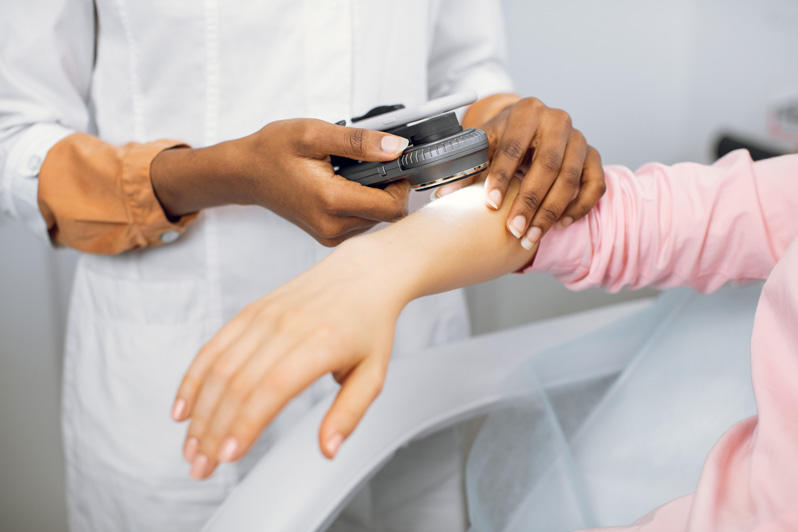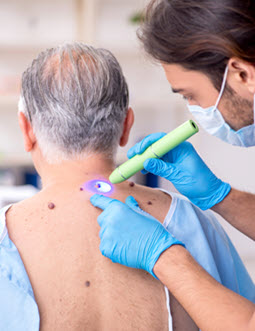Explore advanced acne treatment solutions that cater to your acne type.
Explore advanced acne treatment solutions that cater to your acne type.
Blog Article
Comprehensive Guide to Dermatology: Recognizing Acne, Mole Care, and Dermatitis Therapy
Revealing the complexities of these skin conditions-- their causes, signs, and treatment choices-- can empower any person to make prudent options towards preserving optimal skin health. Hold on, as what complies with may well be the skin care knowledge you've been waiting for.
Comprehending the Skin: An Introduction
Our skin, a complicated and multifaceted organ, functions as the body's primary defense against ecological aspects. acne treatment. It shields us from unsafe ultraviolet rays, pathogens, and poisonous compounds, ensuring our interior systems continue to be unscathed. Making up three layers - the skin, dermis, and hypodermis - it plays a crucial role in preserving body temperature level, saving fat, and offering touch level of sensitivity
The epidermis, the outermost layer, includes melanocytes that produce melanin, contributing to skin color and shielding against UV radiation. The dermis, the middle layer, homes sweat glands, hair follicles, and nerves. The inner layer, the hypodermis, is composed of fat and connective tissues. Comprehending the skin's framework is essential to grasping exactly how it responds to various conditions, including dermatological problems.
Grasping the Causes and Manifestations of Acne
As we navigate deeper right into the world of dermatology, it becomes important to comprehend certain skin conditions, beginning with acne. Acne is an inflammatory skin condition that mostly impacts teens, however can occur at any kind of age. Causes of acne are multifaceted, involving increased oil manufacturing, bacterial spreading, inflammation, and uneven shedding of dead skin cells.

Reliable Acne Treatment Alternatives
A myriad of effective acne treatments exist, each targeting different elements of the problem's pathology. In serious instances, retinoids or hormone therapies might be recommended to manage skin cell turnover and equilibrium sebum production. It's essential to seek advice from with a dermatologist to determine the most ideal therapy plan, as everyone's skin reacts in different ways.
A Deep Dive Into Mole Care

Moving focus to moles, there is much to consider concerning their development, recognition, and removal. The ins and outs of why and just how moles develop on the skin can provide informing insights. Equally vital are the methods for identifying various kinds of moles and the efficient procedures for their elimination.
Understanding Mole Development
Although mole formation is an usual event, numerous remain uninformed of the process behind it. Moles, clinically referred to as melanocytic nevi, are clusters of pigmented cells that commonly show up as small, dark places on the skin. They can establish anywhere on the body, generally during childhood years and teenage years, and may transform in appearance or diminish gradually. Development is mostly influenced by genetic elements and direct exposure to sunlight. A person's hereditary predisposition determines the number and kind of moles, while sunshine exposure, especially during very early years, shapes the complete matter. Despite being benign for the most part, some moles can advance right into skin cancer, highlighting the significance of recognizing mole development and its implications.

Mole Identification Strategies
Navigating the landscape of mole recognition techniques is necessary in maintaining skin health and wellness. The method most frequently used by dermatologists is the ABCDE rule. It represents Asymmetry, Boundary irregularity, Shade variant, Size, and Evolution. Asymmetry indicates that one fifty percent of the mole does not match the various other. Uneven, scalloped or badly defined boundaries may show a bothersome mole. A lot of benign moles are a single color, while different shades of brownish or black are an issue. Moles larger than 6mm, the size of a pencil eraser, must be evaluated. Moles that develop in dimension, form, or shade warrant attention. Comprehending these techniques can help in very early discovery of skin problems.
Efficient Mole Removal Treatments
After recognizing a mole that might be of concern using the ABCDE regulation, one could question the following steps to take. Generally, the primary course of action is consulting look at these guys a skin doctor who can carry out a biopsy if essential. Depending on the outcomes, elimination may be warranted. There are a number of efficient procedures for mole removal, including surgical excision, where the mole is removed, and medical cut, which is generally used for smaller sized moles. Laser removal is another choice, though it's much less commonly made use of as a result of its lack of ability to get to deeper layers of skin. Each treatment has its own healing and aftercare procedure, which consists of keeping an eye on the location for any modifications.
Dermatitis: A Closer Check Out Reasons and Symptoms
Dermatitis, an usual yet intricate skin problem, greatly impacts the lives of several. It's identified by completely dry, itchy, and irritated skin, which commonly causes awkward and consistent irritation. The specific reason for dermatitis remains elusive, but it's believed to be a combination of hereditary and ecological elements. Some individuals have an overactive body immune system that reacts strongly when subjected to particular triggers, such as irritants or toxic irritants, resulting in inflammation. Symptoms can differ considerably from one person to another, but commonly consist of dry, sensitive skin, red and swollen locations, extreme itching, and in serious cases, crusty scales or blisters. Recognizing the causes and signs of dermatitis is the initial step in handling this persistent problem.
Browsing Through Eczema Treatment Options
Eczema, with its myriad kinds and signs and symptoms, provides a facility obstacle for both people and skin doctors alike. The range of therapies readily available can appear frustrating, making it tough to choose the most efficient alternative. This section will certainly direct viewers with the procedure, lighting up the various methods used to treat dermatitis.
Recognizing Eczema Types
While various skin disease may appear comparable, it is vital to recognize that each has one-of-a-kind features and treatment techniques. Eczema, a term typically made use of to explain atopic dermatitis, is not a solitary condition yet rather a group of skin conditions that create inflammation and irritation. There are a number of sorts of eczema, consisting of atopic dermatitis, contact dermatitis, dyshidrotic eczema, nummular eczema, and seborrheic dermatitis. Each kind description of dermatitis has link distinctive signs and symptoms and causes, which can include allergens, irritants, certain foods, or also stress. Proper recognition of the kind of dermatitis is essential to its administration. However, treatment alternatives, which will certainly be reviewed in the following section, are usually comparable across types.
Checking Out Treatment Approaches
Although dermatitis can be a relentless and unpleasant condition, a wide variety of treatment alternatives exist to assist handle its symptoms and improve quality of life. Topical treatments are creams or ointments used straight to the skin to lower swelling and irritation. Photo-therapy includes revealing the skin to ultraviolet light, which can aid lower swelling and improve the skin's wellness.
Conclusion
In final thought, recognizing the reasons, signs and symptoms and therapy alternatives for usual skin problems like acne, moles and eczema is extremely important. This detailed overview to dermatology urges people to keep healthy and balanced skin via educated choices and specialist recommendations.
Report this page